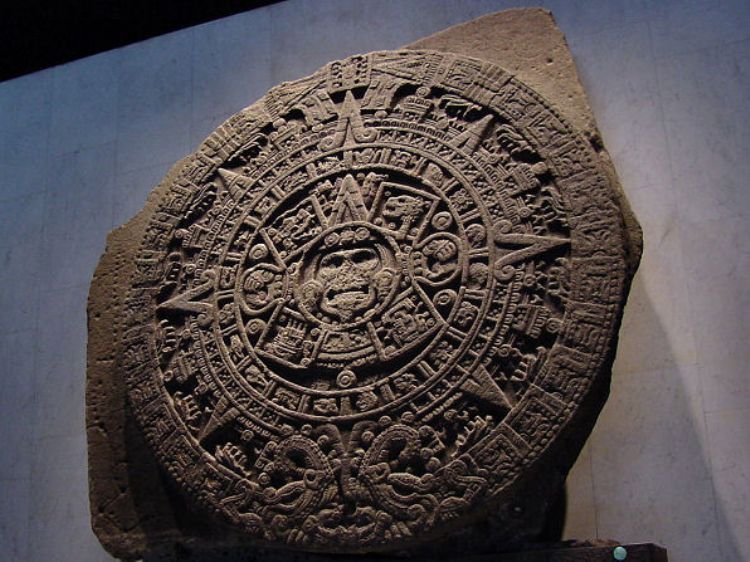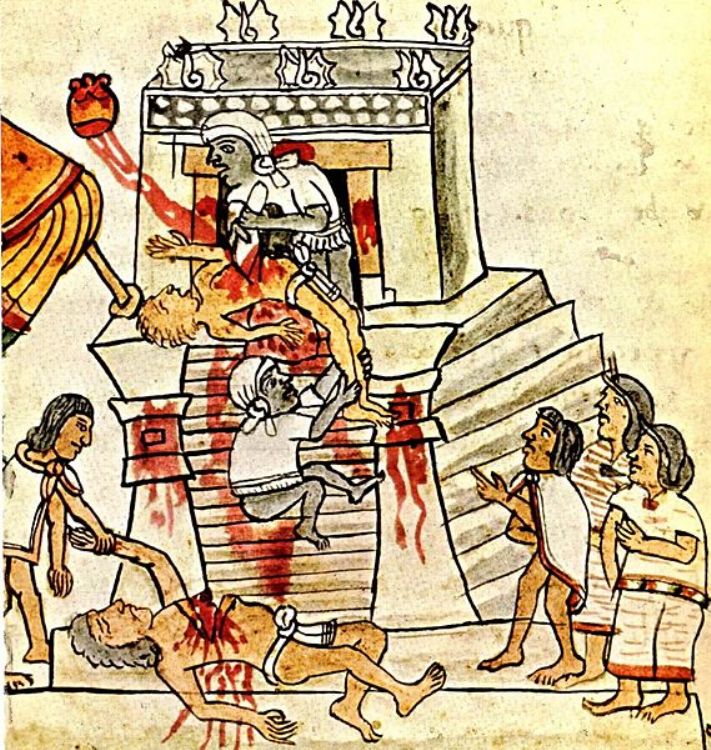
Pre-Columbian era is a term used referring to the situati...
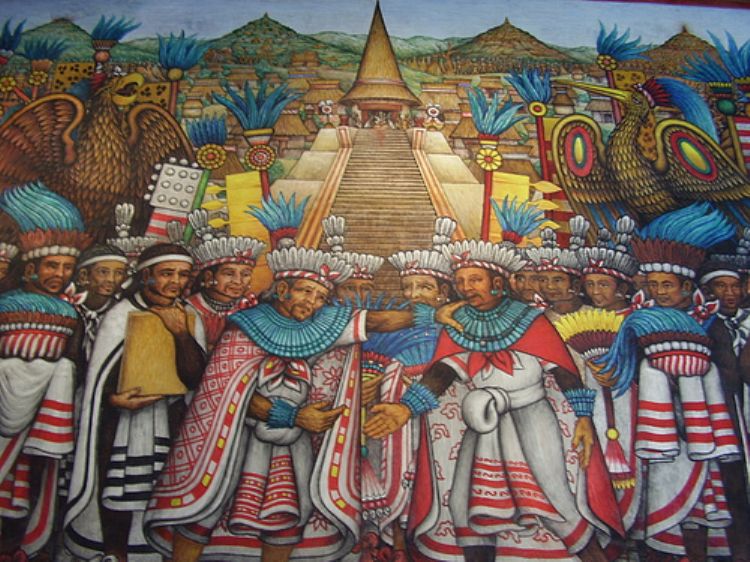
Approximately 12 thousand years ago, the first settlers of Tlaxcala were nomad hunters that 6 thousand years later reorganized in family groups as fruit collectors. With the arrival of agriculture, about 4 thousand years ago, they began to develop ceramic for cooking food; their diet consisted of Maguey, corn and fruits. Its rapid growth was evident in the year 1,000 B.C. when 40 thousand inhabitants settled to the south center of the entity.
Five hundred years later, the population, which was organized in ancient pre-Hispanic cities with streets, temples, pyramids, channels and ditches, ascended to 125 thousand inhabitants, distributed in numerous colonies. In this period, the textile craftworks from maguey and pottery were the main social center of Tlaxcala.
Toward the VII century of our time, the development of this great culture came to a halt due to the threat and arrival of indigenous groups such as the TeotihuacánÃâs, who established in the north; the cholulteca, established in the south, and the olmeca- xicalancas. The latter established their power inside of a fortified city in the river paths of the Atoyac and Zahuapan, toward the south of the state. The name of the city was Cacaxtla and its pre-Hispanic constructions were similar to the rest of the Mesoamerican cities, however, the numerous mural paintings stand out and tell of the ancient beliefs of this city. Its strategic location on top of a hill, besides being a commercial corridor between the Gulf of Mexico, Puebla, Oaxaca and the Pacific, made it into a center of continual cultural interchange.
In the XII century the arrival of teochichimecas meant the end of the olmeca-xicalanca control. From that point on, the tlaxcaltecas reinforced their power and through the years the governors and their families formed 4 great lordships; Tepeticpac, Ocotelulco, Tizatlan and Quiahuiztlan. In the north of the entity, otomies of tlaxco maintained a good relationship with the lordships of Tlaxcala.
In the center of Mexico, the Aztecs exercised absolute dominion over numerous Mesoamerican cities, not over the tlaxcaltecas, who fought again and again to defend their nation and autonomy. During the flourishing of the Mexican culture, the alliance of these lordships with others brought as a consequence the ¨guerras floridas¨, where the allies fought against the enemies, Tlaxcala, Cholula and Huejotzingo. Now that the latter were targets to the battles to take victims of the human sacrifices or for pleasure and entertainment of the warriors, it didnÃât mean they were friends. Cholula and Huejotzingo at some point joined with the Aztecs to attack tlaxcalteca lands, not getting a meter of enemy ground. The tlaxcaltecas were never able to leave the geographical limits of the territory they so well defended, and when the Aztecs blocked its traditional commercial routes, the tlaxcaltecas had to find alternate routes.
At the beginning of the Spanish Conquista, Cortes needed to pass through the tlaxcalteca lands to get to the great Tenochtitlan, for which he had to ask permission from the tlaxcalteca lords. Xicohtencatl Axayactzin, son of the leader Tizatlan Xicohtencatl Huehuetl believed that the arrival of the white bearded man, as the return of the Quetzalcoatl, wasnÃât what they were waiting for, so they obtained authorization to fight against the Spaniards. However, after the third defeat, the indigenous people were ready to negotiate with the enemy.
The result of this negotiation was the following; the tlaxcaltecas collaborated with the Spaniards in the Conquista of the great Tenochtitlan and in return the Europeans respected their autonomy and form of government. This as long as they adopted a catholic religion preached by the conquistadors.
The long tradition of rivalry between the indigenous cities gave as a result the participation of the tlaxcaltecas in the fall of the Mexican empire on August 13, 1521. Due to their participation, the indigenous collaborators received lands and they spread out all around New Spain and in Central America.
According to historian calculations, the foundation of Tlaxcala, usually called ÃâTlaxcallanÃâ, which means Ãâbread placeÃâ or Ãâcorn tortillaÃâ, happened in 1540 and 1550 under the leadership of Antonio de Mendoza. The indigenous people came down from the hills to construct traditional colonial cities with their great central plaza, temples, stores, houses and streets. All this thanks to the fact that the Spaniards desired to obtain control over the indigenous people, whose lordships were reduced.
Despite the royal promise of Spain to not give Tlaxcala lands in properties to the Spaniards, the government of New Spain made some concessions, which provoked the sending of embassies to Spain in 1552 and 1562, reminding the crown of the great service the tlaxcaltecas lent to the business. .
Once the fight for independence was initiated, three centuries alter the initiation of the conquest, the tlaxcalteca government remained loyal the Spanish crown, even so, numerous brave tlaxcalteco people fought to obtain national liberty. Among the ones who stood out were Miguel Serrano, Juan Cortes, Antonio Arroyo and Vicente Gomez.
At the end of the battle for independence, Mexico experienced the brief mandate of Agustin de Iturbide, self-proclaimed emperor of Mexico. During the celebration of the Congress of the Union in 1823, when many of the states defined their independence and autonomy, the government of Puebla requested that Tlaxcala be annexed. Before such request, Tlaxcala authorities went to congress to tell truth about the delay and lack of resources of the territory. It maintained status until December 9, 1856, date which thanks to the labor of Political Chief Guillermo Valle, it obtained the category of Free State
Mid XIX century, during the French invasion, the Tlaxcala people fought against Europeans, however, in 1863 the capital of the state was taken and the governor Manuel Saldaña had to flee to the neighboring sierra. From that point on, Tlaxcala Federals continued fighting against the invasive enemy, until they were able to retake Tlaxcala and form a barrier of contingence around the state of Mexico where the emperor Maximiliano de Habsburgo was found.
The railroad arrived to transform the life of Tlaxcala, as well as the rest of the republic. The small state constructed 260 km of railroad that would detonate the traditional economy. The government of Prospero Cahuantzi fomented the development of the textile industry, glass, iron meeting, paper, and many other manufacturing activities that until then had been kept as small production businesses.
A little before the Mexican Revolution, the Tlaxcala people had heard of the anti re-election ideals of Francisco I. Madero, for which the government of the entity took rapid measures to defend itself from the insurgents. Juan Cuamatzi was the first Tlaxcala revolutionary head to fight for the liberating cause. By the time of his death, the movement had won enough causes to continue the battle.
Towards the end of the same, the head worker Antonio Hidalgo assumed the position in government and dedicated himself to return indigenous lands, create new colonies, impose better salaries and in general better the conditions of the poor; these actions motivated the rich to form their own League of Farmers, whose objective was to destroy Hidalgo. Once their goal was met, Tlaxcala revolutionaries like Domingo Arenas and Maximo Rojas continued the labor of handing out indigenous lands.
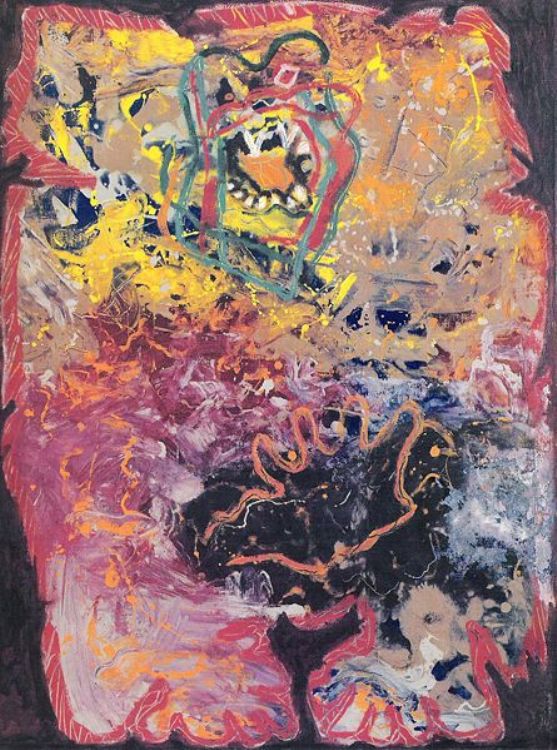
Rodolfo Morales; He was born in 1925 in Ocotlán de...
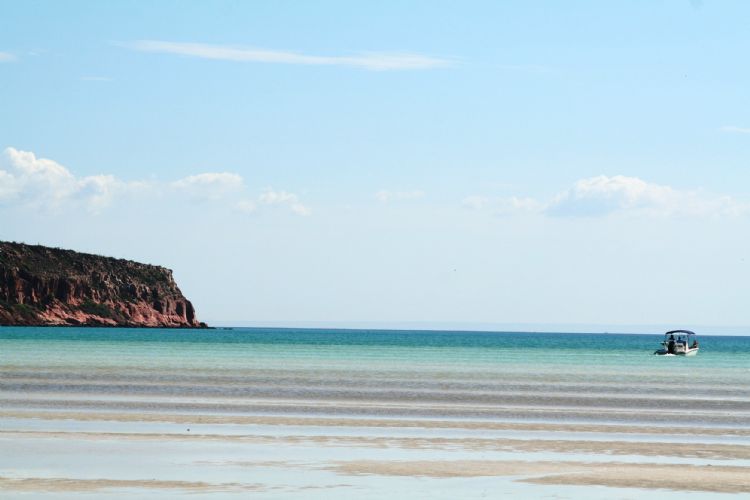
Along the Sea of Cortez, are the beaches of four Mexican ...
